PRS SE P20e Tonare parlour guitar review
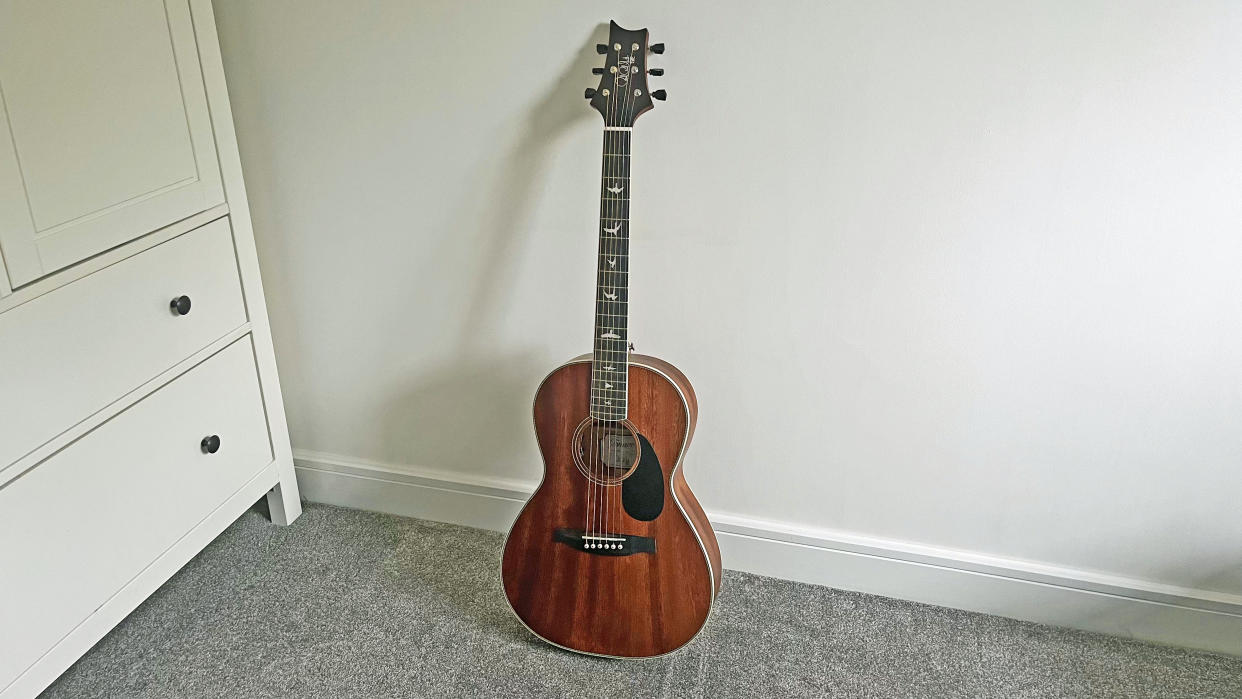
PRS SE P20e Tonare review: What is it?
Thought that Paul Reed Smith was all about flash, fancy electric guitars? Think again! This parlour-sized offering from one of the biggest names in the guitar world showcases that they can do acoustics just as well.
The PRS SE P20e is an electro-acoustic parlour guitar featuring a solid mahogany top, layered mahogany back and sides, mahogany neck, ebony fingerboard, 24.72” scale and a PRS-voiced Fishman Sonitone pickup and preamp system. It also comes shipped in a quality padded gig bag.
Inside the body of the guitar, you’ve got PRS’s Hybrid “X”/Classical Bracing which essentially combines traditional acoustic guitar bracing with classical bracing.
Parlour guitars are known for their smaller body shape and punchy mid-range. They tend to be the smallest full-size acoustic guitars and can make for great travel instruments.
PRS SE P20e Tonare review: Performance & verdict
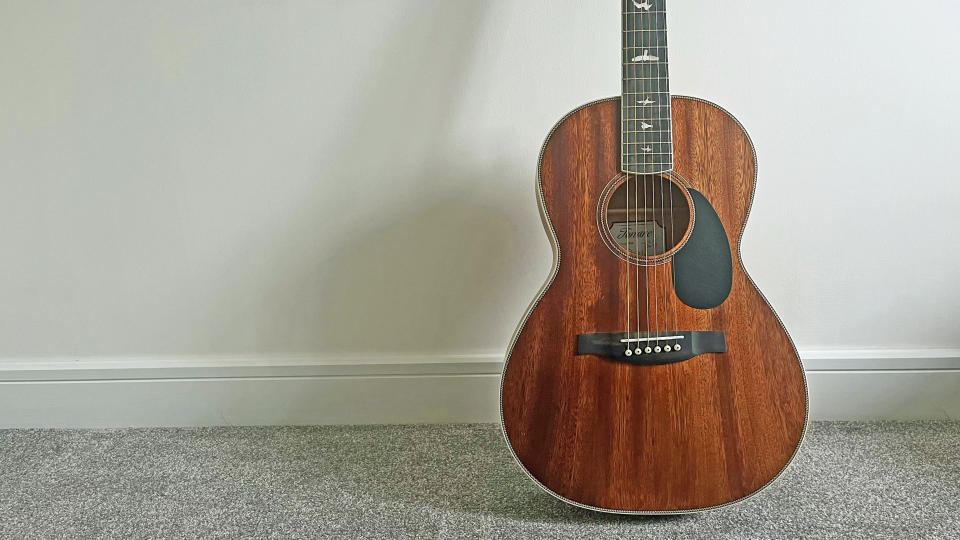
PRS is known for producing well-made instruments, and SE P20e is a perfect example of this. Whilst it’s by no means an expensive guitar (it comes in at under $/£500), it’s built to a very good standard.
Firstly, it looks fantastic - the natural finish shows off the grain of the mahogany, while the herringbone binding adds a subtle touch of class. The model we tried was also perfectly set up, needing no tweaks at all before playing. All the frets were finished properly and all notes rang out as they should.
Another visual thing we noticed right away was the black tuning pegs - they’re quite striking and match the black of the pickguard nicely. Whilst we’re on the tuning pegs - they feel of a high quality, they turn smoothly and hold the guitar’s tuning well.
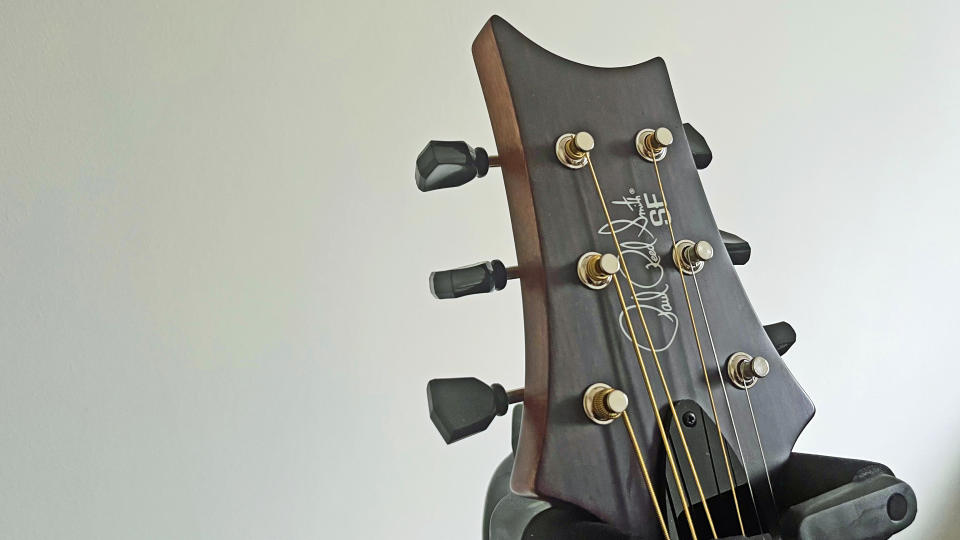
So what does the PRS SE P20e sound like? Well, it sounds like a parlour guitar. It’s very present in the mids - especially the upper mid frequencies - and in the top end. It’s very punchy and focused. There isn’t a ton of bottom, but there isn’t none.
The mahogany does add a nice character to the sound; a touch of warmth, but overall it’s a fairly bright-sounding guitar. It also has quite a direct sound, without many overtones ringing out, which can make it ideal for recording.
The bracing and smaller body shape allows players with a lighter touch to get a lot out of this guitar dynamically. It doesn’t require a really heavy strumming hand to get the guitar to reach its maximum volume.
If you’re primarily an electric player, but you want an acoustic to play around the house or for recording, then this might be the perfect option for you, as it really doesn’t require much of an altered technique to get the most out of it.
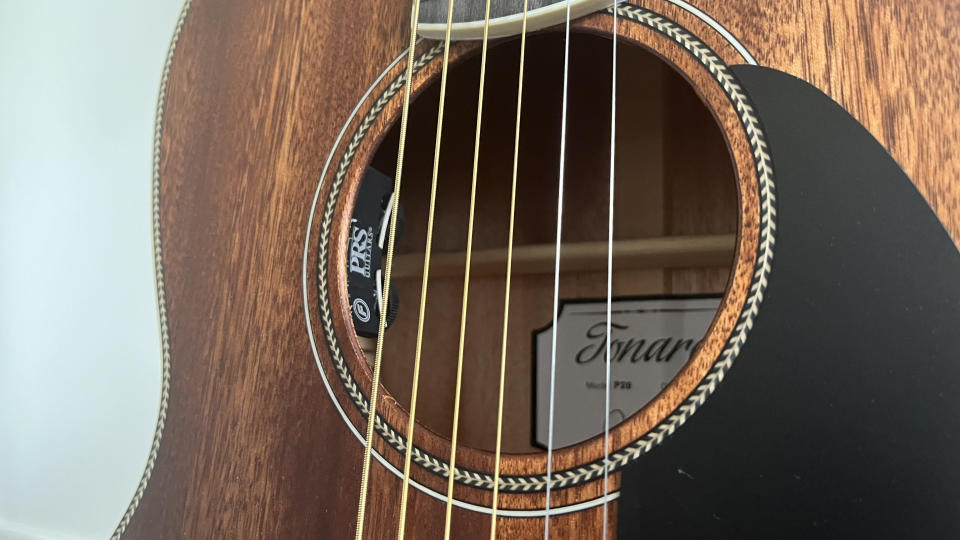
Also consider
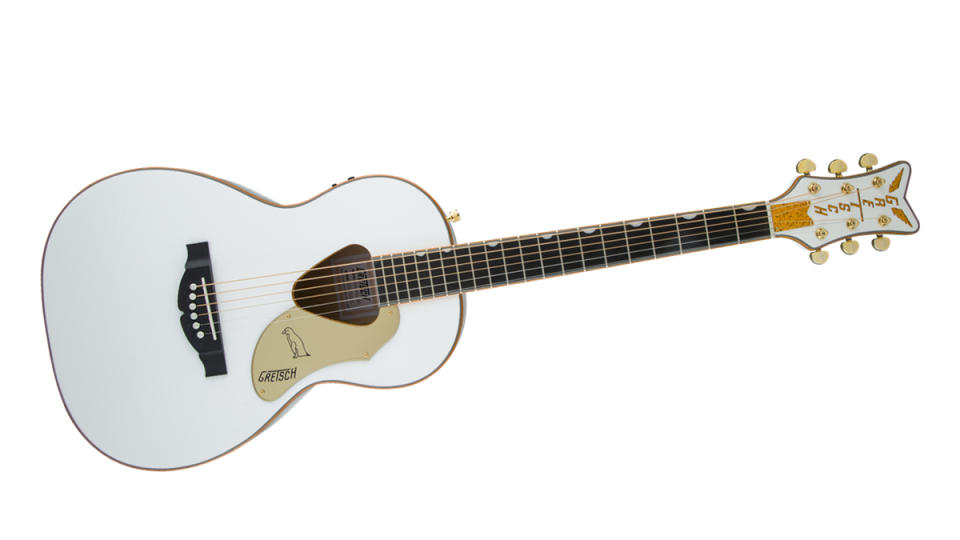
Gretsch 5021E Penguin: The Rancher series adds some of the Gretsch styling to an acoustic platform, making for some unique instruments that sound as good as they look.
Epiphone L-00: This small-bodied Epiphone is affordable, well-built and sounds fantastic. What more do you need?
Fender PM-2 Parlor: This pint-sized Fender has a bigger and bolder voice than you might expect from a parlor-style guitar.
Likewise, when fingerpicking, it’s easy to get various shades of quiet and loud by altering your attack. Compared to a bigger-bodied acoustic, you don’t get as much volume or low end, but that is to be expected with the body shape. Rest assured though, it can project well.
Testing out the pickup, I was keen to hear what this Fishman x PRS voicing would equate to. It’s not a million miles away from your traditional piezo sound, but there is some added warmth making it sound slightly closer to a mic’d up guitar. When recording, I would still opt to mic it up traditionally, but for playing live with a band or as a singer-songwriter, it’s more than adequate.
The controls are very discretely placed at the top of the sound hole and they’re really easy to get to and dial in. The only problem is that, unlike some other pickup/preamp controls, you can’t quickly glance at them and see how they’re set.
Final verdict

Having lived with this guitar for a few weeks, I found myself gravitating towards this around the house instead of my other acoustics.
The physical shape of it - the slightly smaller body shape and shorter scale length -makes it so much more comfortable to play whilst on the sofa or working at a desk. It really isn’t a ‘one or the other’ kind of thing. Tonally it does something very different to the others and is actually just a lot of fun to play.
PRS SE P20e Tonare review: Hands-on demos
Guitar World
PRS Guitars
PRS SE P20e Tonare review: Specifications
Type: Electro-acoustic
Body: Solid mahogany top, layered mahogany back and sides
Neck: Mahogany
Fingerboard: Ebony
Neck profile: Wide Fat
Nut width: 1 11/16”
Pickup: PRS-Voiced Fishman Sonitone
Case: Padded gig bag
Contact: PRS

